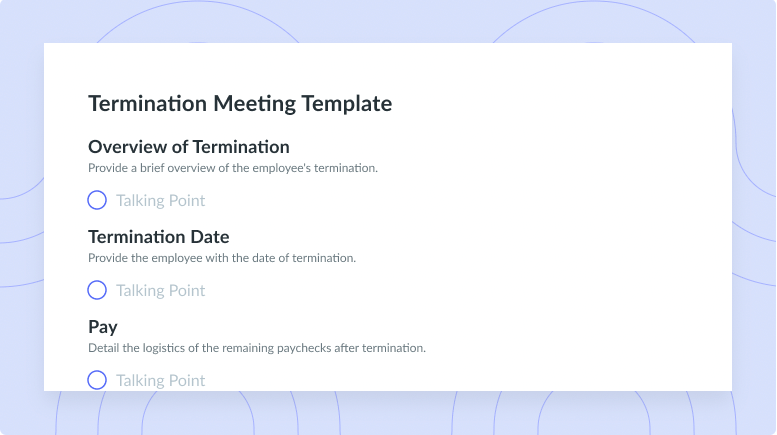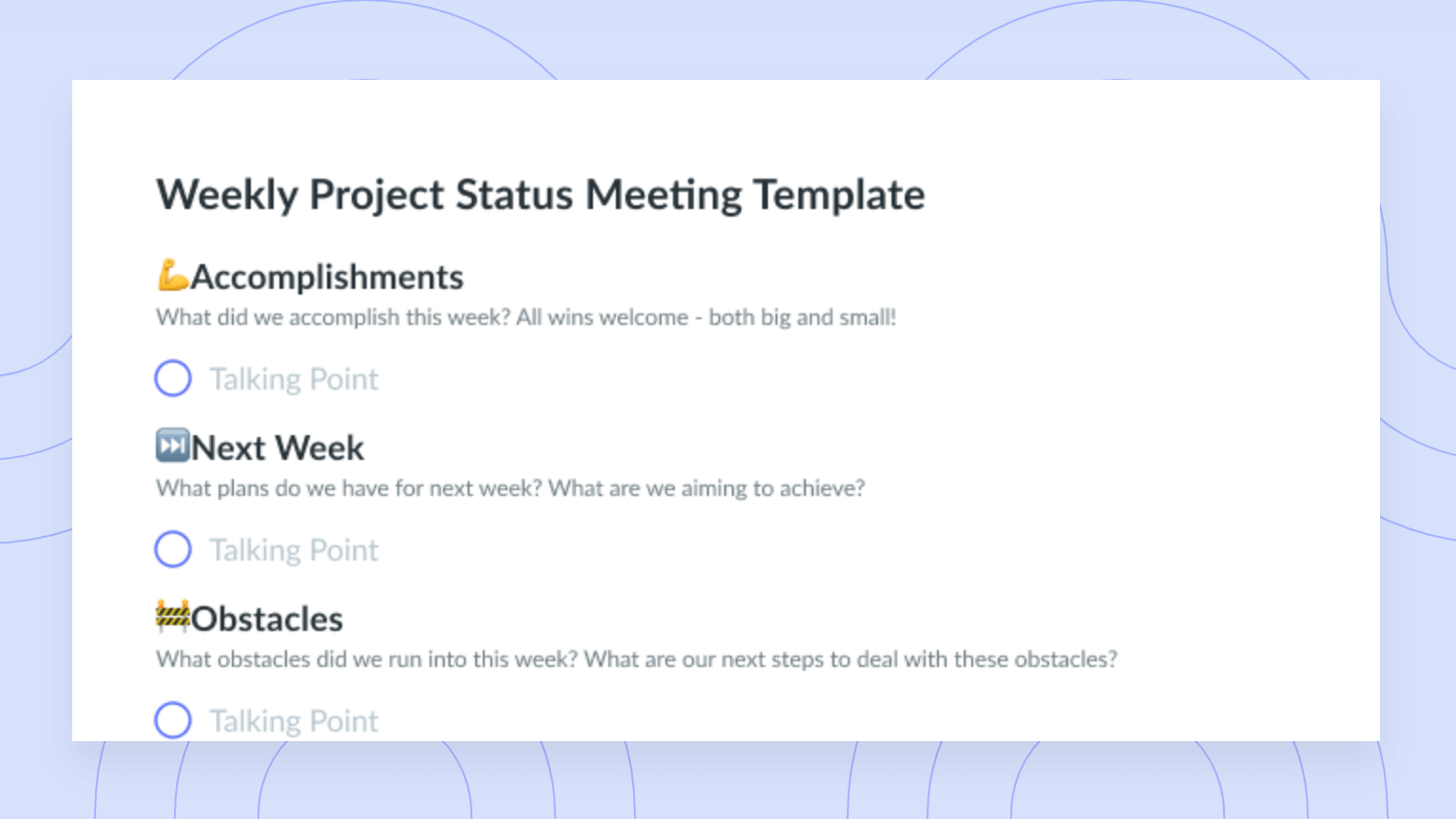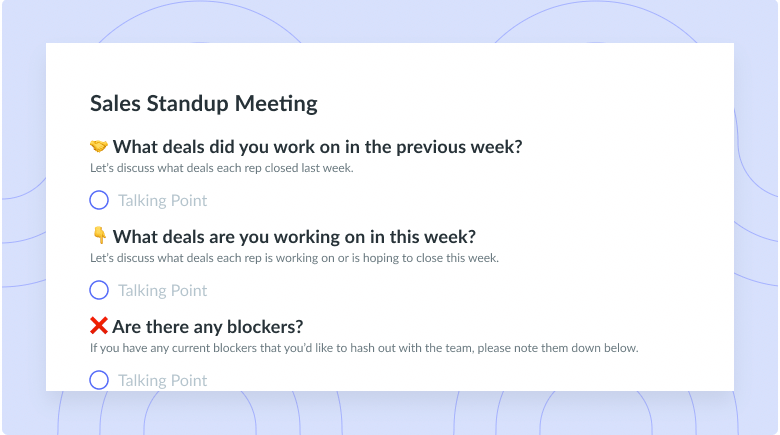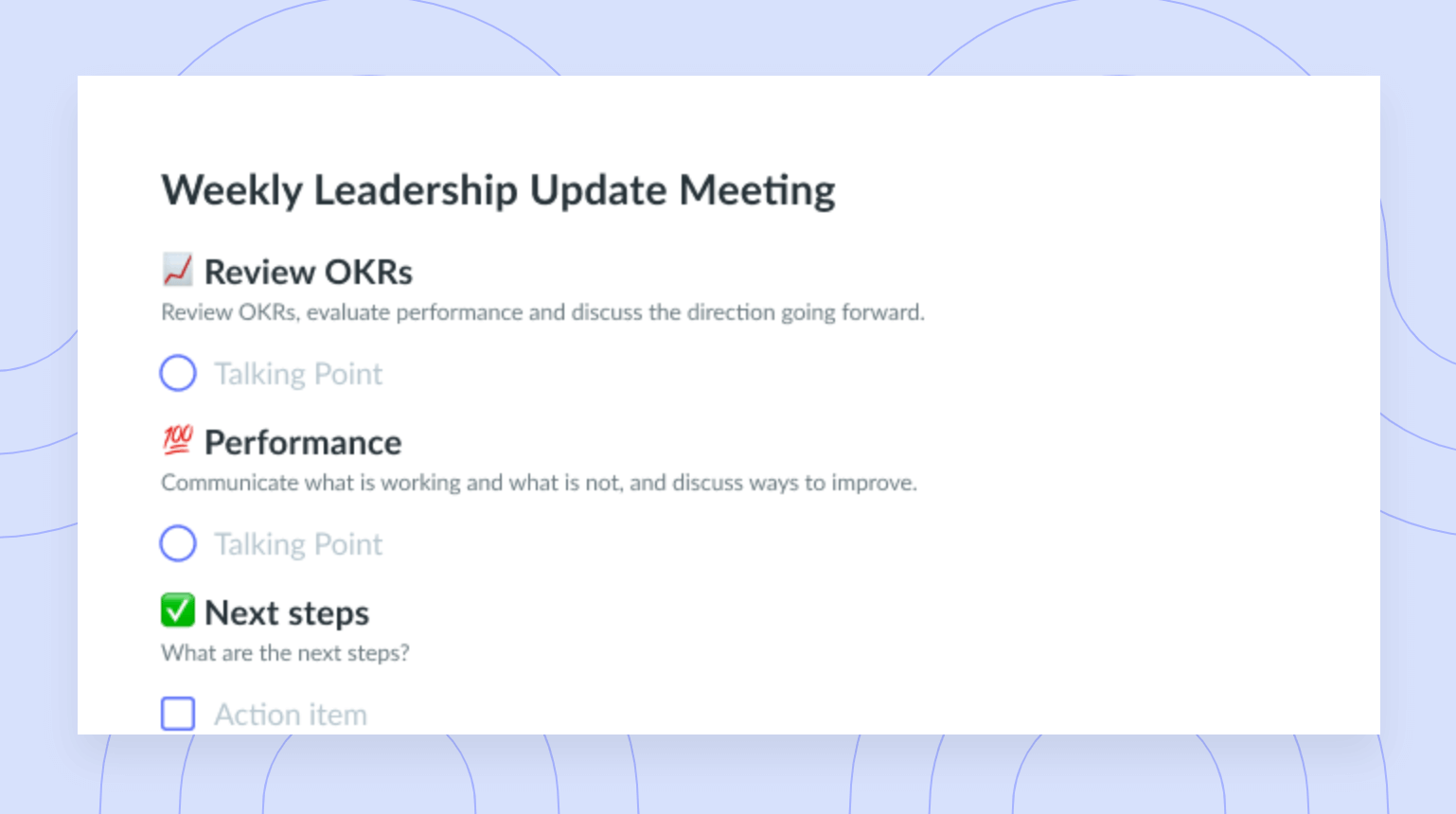Leading Remotely: 7 Best Practices to Keep Your Team Engaged From Afar
Here's how leaders at Drift, Webflow, Gitlab, and Help Scout are keeping their remote teams motivated and aligned.
Leading a remote team has become more than a trend. It’s now a necessity for thousands of managers and leaders across the globe.
Chances are, you’ve been leading remotely for a few months now and have faced some of the challenges involved with managing a distributed workforce.
In order to help you and your team transition to remote work, we’ve compiled a list of 7 best practices that have helped leaders at companies such as Drift, Webflow, and Gitlab keep their teams motivated and aligned.
7 Tips to Effectively Manage and Motivate Remote Employees
- Keep your remote team updated
- Check-in regularly and individually
- Use video as much as possible
- Practice gratitude and recognition
- Communicate important decisions
- Avoid meeting overload
- Don’t hold meetings without an agenda
1 Keep your remote team updated
Now that your team is working remotely, it becomes especially important to communicate updates, initiatives, and decisions regularly.
The best way to do this is to schedule specific times (such as weekly team meetings and all-hands) where company leaders share important information with the rest of the team.
One company that has been doing this successfully is Drift – a conversational marketing technology company based in Boston. According to Cris Mendes (Senior Inside Sales Manager), the Drift team hosts two company-wide meetings per week: Monday Metrics and Show and Tell.

As Drift’s CEO, David Cancel writes in this post, the Monday Metrics and Show and Tell meetings have been essential rituals to build Drift’s culture.
“Our company established Monday Metrics as a place to reflect on the previous week’s progress and align on goals for the week. This ensures we are all on the same page and working towards a common goal,” says David Cancel.
💡 Pro tip: If you want to keep your remote team updated and aligned, you can schedule weekly team meetings and company-wide all-hands.
2 Check-in regularly (and individually)
One common challenge of leading remotely is not being able to connect with your direct reports on a regular basis. When you work at the same office, you’re more likely to run into your employees, ask about their day, and notice physical cues showing that they might be stressed or stuck on something. However, leading a remote team means that you need to be more intentional about the time you spend with your direct reports and how often you check-in with them.
If you’re leading a remote team for the first time, it’s important to schedule recurring one-on-one meetings with your direct reports where you check-in on their priorities, challenges, and professional development.
As Joshua Schnell, Director of Marketing and Communications at BuySellAds argues, one-on-ones are the ideal scenario to ask employees about their productivity and career growth:

Similarly, Heather Doshay, VP of People at Webflow, argues that one of the most common mistakes you should avoid when managing a remote team is cancelling your one-on-one meetings:

💡 Pro tip: If you want to manage a remote team effectively, start by scheduling weekly check-ins with each person on your team.
3 Use video as much as possible (and have fun with it)
Keeping your remote team engaged can be challenging – but leveraging video can help you make meetings and announcements a bit more engaging and exciting.
Take Leah Knobler, Director of Talent Acquisition at Help Scout, as an example. Every Monday, Leah sends a short video to keep everyone on the team updated on company news and initiatives.

Curious to see what Leah’s weekly videos look like? Check out this entertaining compilation of the team’s 2019 Monday updates. If there’s one takeaway, it’s that video is a better way to communicate emotion than email!
Another way to keep your team engaged when leading remotely is to use video for all your remote meetings.
As Lea Jovy, a remote work expert and founder of Location Independent said during our chat, it’s important to turn on your camera and choose video over “voice-only” conversations.

Using video during your virtual meetings will help you see your teammate’s facial expressions and connect with them on a personal level. As Keith Ferrazzi argues in a Harvard Business Review article:
“Video makes people feel more engaged because it allows team members to see each other’s emotions and reactions, which immediately humanizes the room. No longer are they just voices on a phone line; they’re the faces of your co-workers together, interacting.
4 Practice gratitude and recognition
Evidence suggests that gratitude and appreciation contribute to the kind of workplace environments that retain the best talent. That’s why, if you’re leading a remote team, you should make it a priority to recognize employees and foster a culture of appreciation.
One way to do this is to include a ‘shoutouts’ section in your remote team meeting agenda which encourages teammates to acknowledge each other for their great work. This will be a great way to end your meetings on a positive note and build a great remote culture.
Another good idea is to ask employees to share something they’re personally grateful for at the beginning or end of your meeting. As Cris Mendes said during our Twitter chat, this is something that the Drift team does to stay connected in spite of the distance.

5 Communicate important decisions in multiple ways
The fifth best practice to lead a remote team effectively is to overcommunicate. As Tayo Rockson (a diversity, equity and inclusion expert) argues, it’s really important to document decisions and company news in multiple formats.

Here are some ways to communicate important updates with your remote team:
– Weekly company emails
– All-hands meetings
– Weekly video updates
– Company-wide Slack channels
– Employee handbooks
6 Avoid meeting overload
Even though staying in touch is essential when leading remotely, it’s important to remember that scheduling too many meetings can harm your team’s productivity. That’s one piece of advice that Steve Campbell, a senior copywriter (and former team member at VaynerMedia) shared during our Managerchats:

Similarly, Sid Sijbrandij, CEO of Gitlab (the world’s largest all-remote company), said that sync up meetings are a “last resort” for the company.

💡 Pro tip: In order to avoid meeting overload, keep your daily standup meetings under 20 minutes – and limit large group calls to 1-2 per week.
7 Don’t hold meetings without an agenda
Last but not least, make it a habit to collaborate on a meeting agenda and show up prepared to all your remote meetings.
In the book Meetings Suck, Cameron Herold argues that taking the time to plan, prepare, and distribute a meeting agenda is one of the most important aspects of designing an effective meeting.
“If you skip creating an agenda, then your meetings can quickly go off track, get hijacked by a random topic, or include people who shouldn’t be attending,” says Herold.
That’s why Heather Doshay said that one of the best ways to keep your remote team engaged is to ensure that all your meetings have a clear agenda:





























